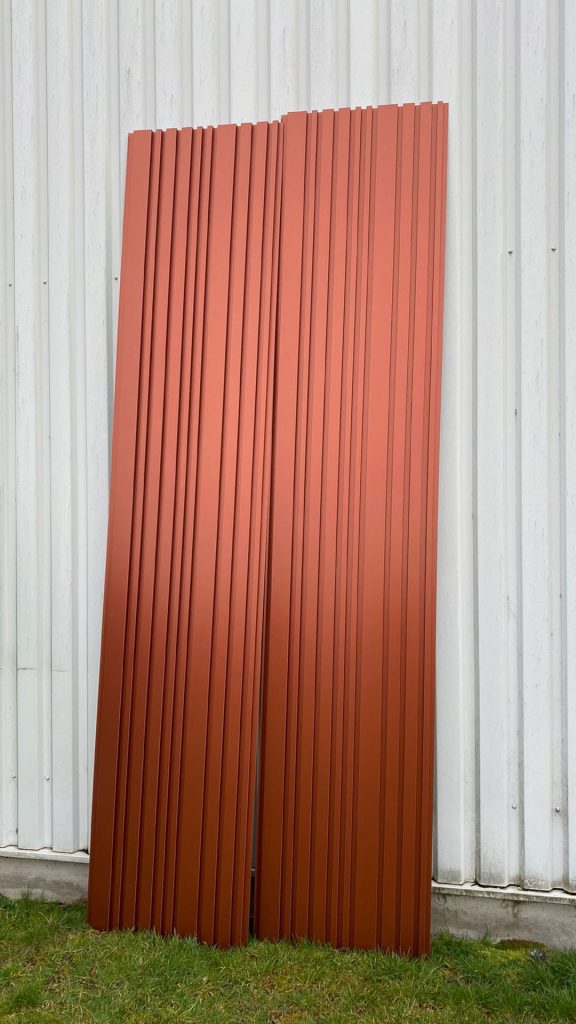Metals have been an integral part of the construction of building envelopes for centuries. In recent decades, metals have established themselves not only in roof construction, but also in façade design. Their durability and resistance to environmental influences such as sun, hail, snow and ice have made them increasingly popular since the 1960s. In addition, there are numerous other advantages and exceptional properties that other materials cannot match.
Frequently used materials
Aluminium, steel, stainless steel, copper and zinc (titanium zinc) are mainly used for the building envelope. These materials have proven their worth for centuries, either alone or in combination. While copper, lead and zinc were often used in the past, aluminium and steel have been increasingly used since industrialisation and the development of foamed and cold-formed profiles. This is also due to the simpler and more economical designs and the high load-bearing capacity of these metals.
The ecological aspect is also playing an increasingly important role. Aluminium and stainless steel score particularly well here, as they do not affect the groundwater. Lead, copper and zinc (titanium zinc) can leach out heavy metals and thus pollute the environment.
Properties of the different materials
Each material has its specific advantages and disadvantages, which must be assessed individually. Copper and zinc (titanium zinc) are easy to process and can be used in thicknesses as low as 0.5 mm. Steel and aluminium, on the other hand, often require different material thicknesses and are used in other areas of application.
Aluminium is the lightest material at around 2.75 kg/m² with a thickness of 1.0 mm. Steel, stainless steel and copper weigh around 8-9 kg/m², with steel being the lightest at around 7.9 kg/m². Steel and stainless steel offer the largest spans and the highest load-bearing capacity. With the right material thickness and profile geometry, spans of up to 7.5 metres can be achieved. Aluminium performs worse here, while copper and titanium zinc are not suitable due to their softness. Copper and titanium zinc always require a base and are not self-supporting profiles that can bridge large distances. As standard, the materials are laid on a substrate of wood or rigid insulation.
Application and corrosion resistance
Copper and titanium zinc are durable and corrosion-resistant when used correctly and are suitable for small connections and special geometries. Aluminium and steel, on the other hand, are mainly used as self-supporting systems. Typical roof profiles are standing seam profiles and trapezoidal sheets, while sidings, panels, corrugated profiles and customised geometries such as our BEMO-UNIKO are used in the façade

Aluminium is naturally corrosion-resistant and forms an oxide layer that serves as a protective coating. It can be coated or anodised and perforated profiles are also possible. Steel, on the other hand, must always be galvanised to prevent corrosion. This can be done in a flowing process or as individual piece galvanisation. The profiles are then colour-coated to meet the visual requirements.
Perforated steel should never be used outdoors. The rapid and high risk of corrosion is too great here. Without additional measures such as batch galvanising, there is hardly any corrosion protection here.
In special climatic conditions such as high salt content in the air or aggressive environments (e.g. in an industrial park), it is always necessary to assess the load separately and react accordingly. Standard coatings and alloys do not work here.
Sustainability and ecology
Metals enable durable and sustainable construction. With the right workmanship and the right details, a metal building envelope can easily last 50 years or more. Differences exist in the deconstruction and the environmental impact during the service life. Aluminium and stainless steel are groundwater-neutral, while steel, copper and zinc can release heavy metals. Coatings last for several decades, although different qualities and compositions exist. Individual advice is therefore advisable.
When dismantling, it is important that the materials can be separated to enable recycling. Aluminium profiles can be opened and reused, which theoretically enables a new roof to be made from old profiles. Aluminium can be recycled with only 5% of the original primary energy, and this value will continue to fall in the future. Other metals can also be recycled, but with greater effort and lower recycling rates.
Overall, metallic materials in the building envelope offer numerous advantages, from durability and high load-bearing capacity to ecological aspects and recycling options. The future of sustainable construction will continue to be characterised by innovations and optimisations in this area.







